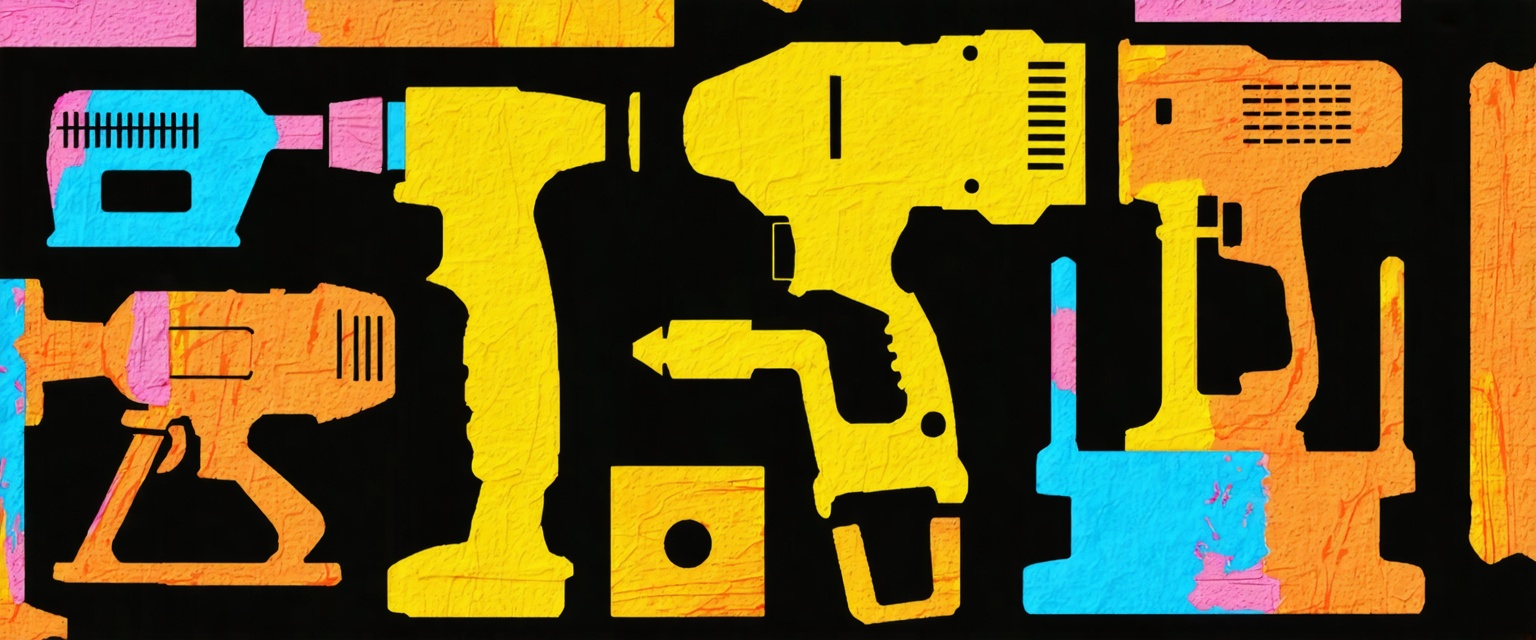All Posts
Construction - AI-Powered Project & Workflow Automation
How AI Streamlines Construction Cost Analysis and Budget Automation

Discover how AI revolutionizes construction cost management and budget automation. Streamline processes, minimize errors, and ensure project success with AI innovations.
Construction cost estimation is fraught with challenges—tedious manual calculations, scattered data, and a high risk of expensive mistakes. Professionals often struggle with inefficiencies and guesswork, leading to budget overruns and project delays. The inability to manage real-time data and uncover hidden cost drivers hampers accurate budgeting.
Datagrid's data connectors offer a solution to this persistent challenge. By integrating advanced AI tools into the estimation process, these connectors empower construction professionals to streamline workflows, reduce errors, and keep budgets on track. With Agentic AI and Datagrid's data connectors, you can transform the way you approach cost estimation, paving the way for faster, more accurate budgeting.
How AI Automates Budgeting & Cost Estimation in Construction
Artificial Intelligence is reshaping how construction projects come together. By automating budgeting and cost estimation in construction, AI tools analyze patterns in massive datasets to predict costs with a speed and accuracy manual methods can't match. This advancement in AI technology in construction is revolutionizing the industry.
When a single miscalculation can derail an entire project, that's a big deal. The old way was slow and prone to human error, but AI offers predictive models refined by both historical and real-time data.
But AI isn't just about managing costs. It supports energy-efficient design choices, reduces waste, and enhances on-site oversight. By tapping into camera feeds, labor logs, and machine data, AI spots risks or delays before they become major problems. Some systems even consider weather forecasts to schedule labor, deliveries, and inspections with fewer surprises.
Machine learning algorithms drive these improvements through AI-enhanced data analysis. They process data points at a rate we can't match, getting smarter over time for greater accuracy. Natural Language Processing (NLP) digs into documents like contracts and specifications, pulling out crucial details that might otherwise slip through the cracks.
This blend of machine learning and NLP brings a new level of precision through AI-driven data enrichment. Cost estimation, once based on guesswork and generic formulas, is now an informed, near-real-time process. From energy modeling to scheduling, AI automation for efficiency paves a more predictable road for decision-makers across the construction industry.
Traditional Challenges in Budgeting and Cost Estimation
Before AI automated budgeting and cost estimation in construction, the industry faced significant hurdles. Budgeting and cost estimation relied on slow processes and gut feelings. That left room for inflated material spending, last-minute changes, and frequent overruns. Over time, mismatched spreadsheets and incomplete historical data showed just how unreliable old methods could be when facing modern construction demands.
Manual Calculations and Human Error
Manually crunching numbers was tedious and risky. One oversight could balloon into a major budget mishap. Expertise varied widely among estimators, making it tough to maintain consistency. In high-stakes industries like construction, these inaccuracies often led to hefty project costs and schedule delays.
Spreadsheets and Data Management
Switching from hand calculations to spreadsheets helped a bit, but it wasn't enough. Spreadsheets fell short when projects got more complex. They didn't adjust well to real-time changes, lacked integration with other systems, and forced people to spend hours wrestling with formulas. In fast-paced construction settings, those shortcomings slowed progress and hindered timely updates.
Dependence on Historical Data
Project teams often leaned heavily on historical records for estimates, but those records weren't always comprehensive or relevant to new builds. That gap forced conservative estimates or guesswork, inflating budgets just to play it safe. Whenever a project fell outside the typical scope, the historical data was even less useful.
Lack of Systematic Sharing and Adaptation
Siloed information also undermined attempts to improve. Lessons learned on one project weren't accessible for the next one, so teams repeated short-sighted methods. In construction, where costs and scope can shift quickly, it meant redoing calculations each time an unexpected factor emerged. That wasted resources and led to inconsistent results.
Case Study: Construction Industry
Unforeseen site conditions or spikes in labor costs plagued major builds. Without real-time tools, even a slight change in material pricing could upset an entire budget. Spreadsheet-based tracking was cumbersome and rarely kept pace with on-the-ground realities. As new demands piled up, the old way of estimating revealed glaring inefficiencies. These historical issues set the stage for AI's entrance, highlighting the difference between old "best guesses" and today's data-driven precision.
AI Technologies Automating Budgeting & Cost Estimation in Construction
AI isn't just speeding up estimates—it's changing the entire process. Advanced machine learning algorithms adapt based on incoming data, sharpening predictive power in ways brute-force calculations can't match. This AI automation for efficiency utilizes historical costs, real-time pricing, and labor metrics, allowing these algorithms to quickly identify cost drivers, from multi-jurisdiction permits to fluctuating material fees.
Three types of machine learning stand out in streamlining construction estimation:
- Supervised Learning: Uses labeled data to teach AI how to predict costs based on known historical outcomes.
- Unsupervised Learning: Analyzes data without predefined labels, uncovering unexpected patterns and cost risks.
- Reinforcement Learning: Simulates different resource allocations and scheduling strategies, refining outcomes with each round of feedback.
Natural Language Processing (NLP) extends the reach of these methods. By parsing documents like blueprints or contracts, AI captures every nuance, such as special material requirements or unique regulatory codes. This comprehensive approach to AI-enhanced data analysis lowers the chance of nasty surprises during the build.
This blend of machine learning and NLP brings a new level of precision through AI-driven data enrichment. Cost estimation, once based on guesswork and generic formulas, is now an informed, near-real-time process. From energy modeling to scheduling, AI paves a more predictable road for decision-makers across the construction industry.
Benefits of AI Automation in Budgeting & Cost Estimation in Construction
Quantitative Benefits
AI can analyze data at a scale and accuracy few humans can match. Traditional estimation methods can't keep up with the speed or depth of learning algorithms that constantly incorporate market fluctuations, labor costs, and prior project pitfalls. That alone reduces budget overruns, boosting team confidence in each forecast.
Time savings is another major plus. Automating data analysis with AI for enhanced efficiency frees estimators from repetitive tasks, letting them focus on strategic decisions. AI also helps manage resources more precisely, minimizing on-site waste. A blend of accurate forecasting and efficient planning can significantly reduce overall project costs and material waste. Utilizing AI for validation and accuracy ensures that cost estimations are precise, reducing the risk of expensive mistakes.
Qualitative Benefits
AI's shared dashboards foster transparency among all stakeholders. Everyone sees the same real-time metrics, leading to more cohesive communication and smoother negotiations. NLP, in particular, pulls crucial details from text-based documents, closing information gaps for well-rounded estimating.
AI-driven refinements don't stop once a project launches. They keep improving with each new dataset, adapting quickly to shifts in scope or market pricing. That agility makes course corrections less painful. In an industry where small oversights can snowball, this real-time learning provides a competitive edge and an easier path to on-time, on-budget completion.
Potential Drawbacks and Challenges of AI Implementation
While AI can reshape construction cost estimation, a few pitfalls need attention to make sure the technology delivers on its promises.
Data Quality and Availability
AI outputs are only as reliable as the data they process. Gaps or outdated figures lead to misleading results, undermining trust in the system. Consistent data collection practices—paired with routine audits—keep these algorithms accurate.
Initial Implementation Costs
Setting up AI infrastructure isn't always cheap. Software licenses, hardware upgrades, and training can strain budgets. A phased approach—where smaller pilot programs build momentum—can help companies see early advantages without breaking the bank.
Human-AI Collaboration
Some team members may worry that AI threatens jobs or replaces hard-won expertise. Industry experts generally view AI as a complement to skilled labor, handling tasks that are tough to monitor manually. Clear communication about AI's benefits and dedicated training ease these fears and lead to more collaboration.
Ethical Considerations
Bias and privacy concerns can emerge when AI handles large sets of information. Algorithms must be transparent enough to show why certain decisions get made. Companies that adopt AI responsibly stay vigilant about data ethics, ensuring they follow guidelines while protecting sensitive information.
Addressing these issues upfront reduces friction and encourages smoother adoption.
How Agentic AI Simplifies Construction Task Automation
Construction project managers juggle countless details, from compliance checks to scheduling. Datagrid's data connectors and AI agents handle many of these tasks automatically, so you can focus on crucial oversight and stronger client relationships.
By automating budgeting and cost estimation in construction, you can link your construction software—Procore, PlanGrid, Autodesk BIM 360—to Datagrid's AI-powered platform. RFPs, submittals, change orders, and daily reports sync between systems without manual entry. That cuts down on communication gaps and saves countless hours typing or transferring data.
Automating Key Processes
AI agents scan incoming bid documents, utilizing AI for document management to align them with historical data to spot potential issues. They also track permits and statuses across multiple jurisdictions, reducing the chance of missing deadlines.
This connectivity doesn't stop at construction-specific tools. By integrating AI tools, popular project management apps like Microsoft Project and Primavera P6 can feed live schedule updates into one place. And connecting financial systems like Sage 300 or QuickBooks automates cost tracking, giving project managers a clearer view of cash flow without sifting through different platforms.
Enhancing Operational Efficiency
With AI for document management, tasks that normally bog you down—like reviewing submittals—get routed instantly. Need to file an RFI? AI agents pull the relevant details, send it to the right person, and shave days off the turnaround. The same goes for safety compliance. Datagrid monitors reports and sends alerts if certifications expire or potential violations pop up.
These integrations help you spot issues early. Daily reports and scheduling data feed into one system that highlights slowdowns before they ripple through the entire project timeline.
Facilitating Better Communication
Slack, Microsoft Teams, and other messaging apps link up too. When an RFI changes, the relevant folks are notified without someone having to chase them by email. Everyone stays in the loop, reducing the flurry of scattered messages.
Using Datagrid's data connectors and AI agents keeps routine tasks in the background, freeing project leaders to tackle higher-level strategies. It's a way to lean on real-time intelligence while you handle pressing client demands.
Simplify Budgeting and Cost Estimation in Construction with Agentic AI
Ready to transform your construction management approach with smart automation? Datagrid offers seamless integration with Procore, PlanGrid, and BIM 360. Its core strengths include AI-driven RFP Analysis and Bid Management, which allow you to manage bids with precision and automate RFP reviews for confident decisions.
Additionally, Datagrid features Automated Submittal and Change Order Processing that cuts tedious tasks, reduces mistakes, and ensures alignment across teams. The platform also provides real-time project insights and schedule optimization by sharing up-to-date reports for clearer, faster decisions on timelines and budgets. Want to see exactly how Datagrid can help you achieve these goals?
Create a free Datagrid account












